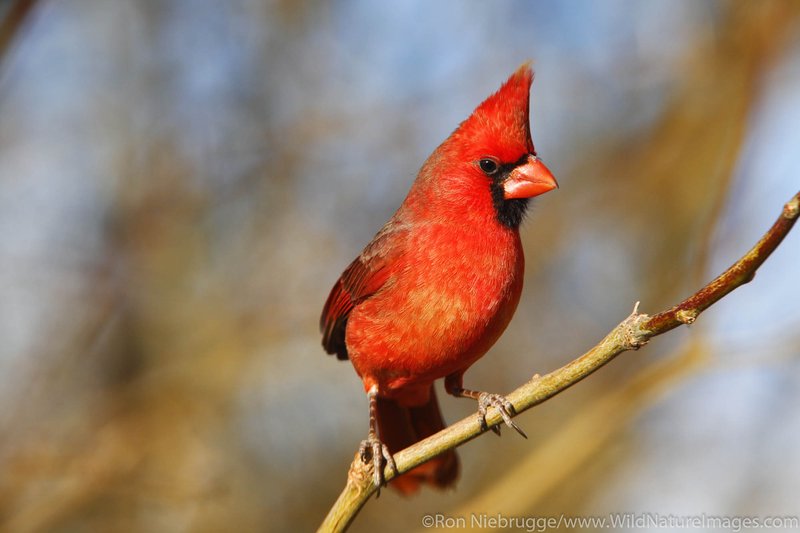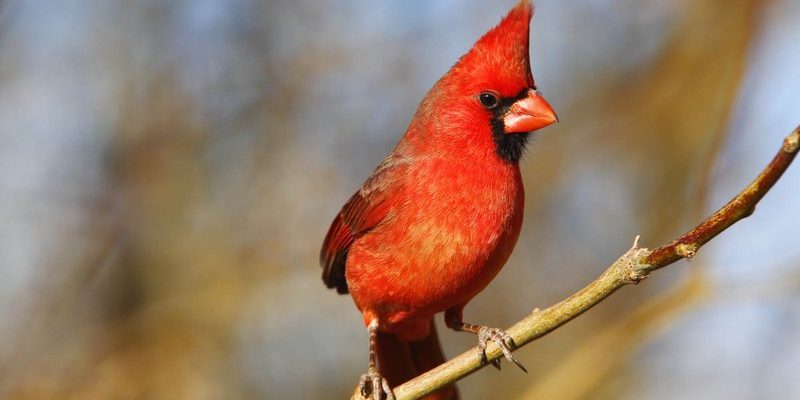
The Northern Cardinal is like a bright splash of color against the backdrop of a drab winter landscape. This bird, native to North America, is known for its striking red plumage and cheerful song. Imagine sitting in your backyard, sipping coffee, when suddenly, you hear a sweet melody that sounds like nature itself is singing. Look up, and there it is—the Northern Cardinal, perched right on your fence, its vibrant feathers catching the morning sun. It’s a sight that brings joy and a sense of connection to the wild.
But there’s more to these birds than just their good looks. With a fascinating array of behaviors and a rich role in ecosystems, the Northern Cardinal has captured the hearts of bird enthusiasts and casual observers alike. Let’s dive deeper into what makes this bird so special, uncovering everything from its habitat to its unique habits.
Physical Characteristics
The first thing you notice about the Northern Cardinal is its distinct coloration. Males showcase a vibrant, rich red, while females have a more subdued palette of brown and warm reddish hues. The male’s striking looks are not just for show; they play a crucial role in attracting mates. You might be surprised to know that the males also have a black mask around their faces, which adds a level of character to their appearance. Females, with their more understated elegance, still sport this mask, making them equally charming.
Cardinals are medium-sized birds, measuring around 8.3 to 9.1 inches in length with a wingspan of 9.8 to 12.2 inches. Their beaks are short, thick, and conical, perfect for cracking seeds and nuts. This beak is a defining feature that sets them apart from many other songbirds. Their strong legs and feet allow them to hop around with ease, making them agile foragers.
When it comes to identifying a Northern Cardinal, look for their distinctive crest on the head. This crest can be raised or lowered depending on their mood—think of it as their little mood indicator. You might see it standing tall when they’re feeling regal or flattened when they’re feeling threatened. It’s these unique features that make them a favorite among birdwatchers.
Habitat and Range
Northern Cardinals are incredibly adaptable birds that thrive in a variety of environments. They can often be found in woodlands, gardens, parks, and shrubby areas. You might find them in mixed forests, where they can flit about among trees and bushes. Their preference for edges—where woods meet open fields or urban areas—makes them common sights in both rural and suburban settings.
Geographically, these birds are primarily found in eastern and central North America. Their range extends from southern Canada all the way down to Texas and includes parts of Mexico. Such a broad range speaks to their adaptability and resourcefulness, allowing them to thrive in many different climates.
Interestingly, Northern Cardinals are also known for their strong territorial instincts. During the breeding season, males will fiercely defend their territory, singing from high perches to announce their presence. If you’re lucky, you might witness a male chasing away intruders—an impressive display of bravery for such a small bird!
Diet and Feeding Habits
When it comes to food, Northern Cardinals have a diverse palate. They are primarily seed eaters, with a particular fondness for sunflower seeds, safflower seeds, and corn. You might see them foraging on the ground or women they visit backyard feeders, where they’re drawn to a smorgasbord of seeds and fruits laid out by enthusiastic bird lovers.
Their diet isn’t limited to seeds, though. They also enjoy a mix of fruits, such as berries and grapes, and occasionally munch on insects or small invertebrates, especially during the breeding season when they need extra protein for their growing chicks. Imagine a pair of cardinals swooping down to feast on juicy berries; it’s a delightful scene that showcases their role in many ecosystems as seed dispersers.
To attract these stunning birds to your yard, consider setting up a bird feeder filled with sunflower seeds or hanging a fruit basket for them to peck at. This simple act not only offers you a front-row seat for their antics but also contributes to their survival, especially during harsh winter months when food is scarce.
Behavior and Social Structure
Northern Cardinals are known for their delightful and melodic songs, which add a symphonic touch to any garden or woodland. The males are particularly vocal, singing a series of clear, whistled phrases that can be quite complex. Think of their songs as a way to express territory and attract mates. They will often repeat phrases, sometimes mimicking the calls of other birds, which can catch your attention and make you wonder if you’re hearing things!
These birds are also quite social. During the non-breeding season, you might see them foraging in small groups, often with other birds like titmice and chickadees. This social behavior helps them find food more efficiently and adds an element of camaraderie to their daily lives. However, once breeding season rolls around, they become more solitary. A male will often establish a territory that he defends fiercely against other males.
Pair bonding in cardinals is also quite fascinating. Once a pair mates, they tend to stay together throughout the breeding season, raising their young together. Both parents share in the duties of feeding the chicks, which is not always seen in many bird species. This level of cooperation adds to their charm and showcases the tight-knit family structure they maintain.
Reproduction and Lifespan
The breeding season for Northern Cardinals typically begins in early spring and can last through summer. A female cardinal is known to lay between 2 to 5 eggs per clutch, usually nesting in dense shrubs or trees to provide shelter for their young. This choice of nesting site is crucial, as it offers protection from predators like cats and squirrels.
Once the eggs hatch, both parents are involved in caring for the chicks, bringing them food and keeping them warm. You can only imagine how busy things must get in the nest with tiny mouths demanding attention! After about 9 to 12 days, the chicks fledge, or leave the nest, although they often stay close by as they learn to forage and fly.
In terms of lifespan, Northern Cardinals typically live for about 3 years in the wild, but some individuals can reach up to 15 years in more favorable conditions. Their longevity can be attributed to their adaptability and their ability to thrive in diverse environments. Knowing that these colorful birds often return to the same area year after year adds a lovely narrative to their existence.
Conservation Status
Fortunately for bird lovers, the Northern Cardinal is not currently considered at risk. These birds are widespread and are well-suited to urban environments, which helps their population remain stable. Conservation efforts primarily focus on preserving their natural habitats, ensuring that they continue to thrive in the wild.
However, like many species, they can still be affected by habitat loss and climate change. Participating in local conservation efforts, such as planting native flora and minimizing pesticide use, can contribute to their well-being. The more we protect their habitats, the more chances we have to keep enjoying these cheerful birds.
Many birdwatchers also take part in citizen science projects, providing valuable data on Northern Cardinal populations and their behaviors. By keeping an eye on these beautiful creatures, we can help ensure that they remain a staple of our backyards and parks for generations to come.
Interesting Facts
| Scientific Name: | Cardinalis cardinalis |
| Size: | 8.3 to 9.1 inches long |
| Wingspan: | 9.8 to 12.2 inches |
| Diet: | Seeds, fruits, insects |
| Lifespan: | 3 to 15 years |
| Habitat: | Woodlands, gardens, parks |
| Conservation Status: | Least Concern |
FAQ
What does the Northern Cardinal eat?
Northern Cardinals have a varied diet, primarily consisting of seeds, nuts, fruits, and sometimes insects. They’re particularly fond of sunflower seeds and can often be seen at bird feeders. Their preference for certain foods can change with the seasons, as they seek different nourishment according to availability.
Are Northern Cardinals migratory birds?
No, Northern Cardinals are generally non-migratory. While some birds may move to find food during particularly harsh winters, they usually remain within their established territories year-round. This characteristic makes them a common sight in many backyards across North America.
How can I attract Northern Cardinals to my backyard?
To attract Northern Cardinals, consider setting up a bird feeder with sunflower seeds, safflower seeds, or a variety of fruits. Planting native shrubs or trees where they can nest and forage will also help. Providing fresh water in bird baths can further encourage these vibrant birds to visit.
Do both male and female Northern Cardinals sing?
Yes, both male and female Northern Cardinals can sing, but males are known for their more elaborate songs. Female cardinals do sing as well, often using softer notes, especially when communicating with their young or mates. Their songs are an important part of their social behavior.
What is the significance of the Northern Cardinal’s crest?
The crest of a Northern Cardinal serves as a visual cue about its mood. When a cardinal is excited or alert, it will raise its crest, while a flattened crest can indicate stress or submission. This feature adds to their expressive behavior and helps you gauge what they might be feeling.
How can I identify a Northern Cardinal from other similar birds?
Northern Cardinals can be distinguished from other birds by their bright red color in males, the black mask around their faces, and their short, thick beaks. Females have a more subdued color palette but still exhibit the characteristic black mask and crest. Their distinct songs also set them apart from other species.
What is the breeding season for Northern Cardinals?
The breeding season for Northern Cardinals usually begins in early spring and can extend through summer. During this time, they build nests, lay eggs, and raise their young. They often have multiple broods in a single season, depending on food availability.
What are the main threats to Northern Cardinals?
While Northern Cardinals are currently not considered endangered, they can face threats from habitat loss, predation, and extreme weather. Urban development can lead to loss of natural habitats, making conservation efforts essential to ensure their survival.
Can Northern Cardinals be kept as pets?
It’s generally illegal to keep Northern Cardinals as pets due to wildlife protection laws. They are wild birds that thrive best in their natural habitats. Instead, consider creating a bird-friendly environment in your yard to enjoy their presence in a safe and natural way.
What role do Northern Cardinals play in the ecosystem?
Northern Cardinals play a significant role in their ecosystems as seed dispersers. As they forage for food, they help to spread seeds, promoting plant growth and contributing to the health of their environments. This natural behavior supports biodiversity and the overall balance of their habitats.

